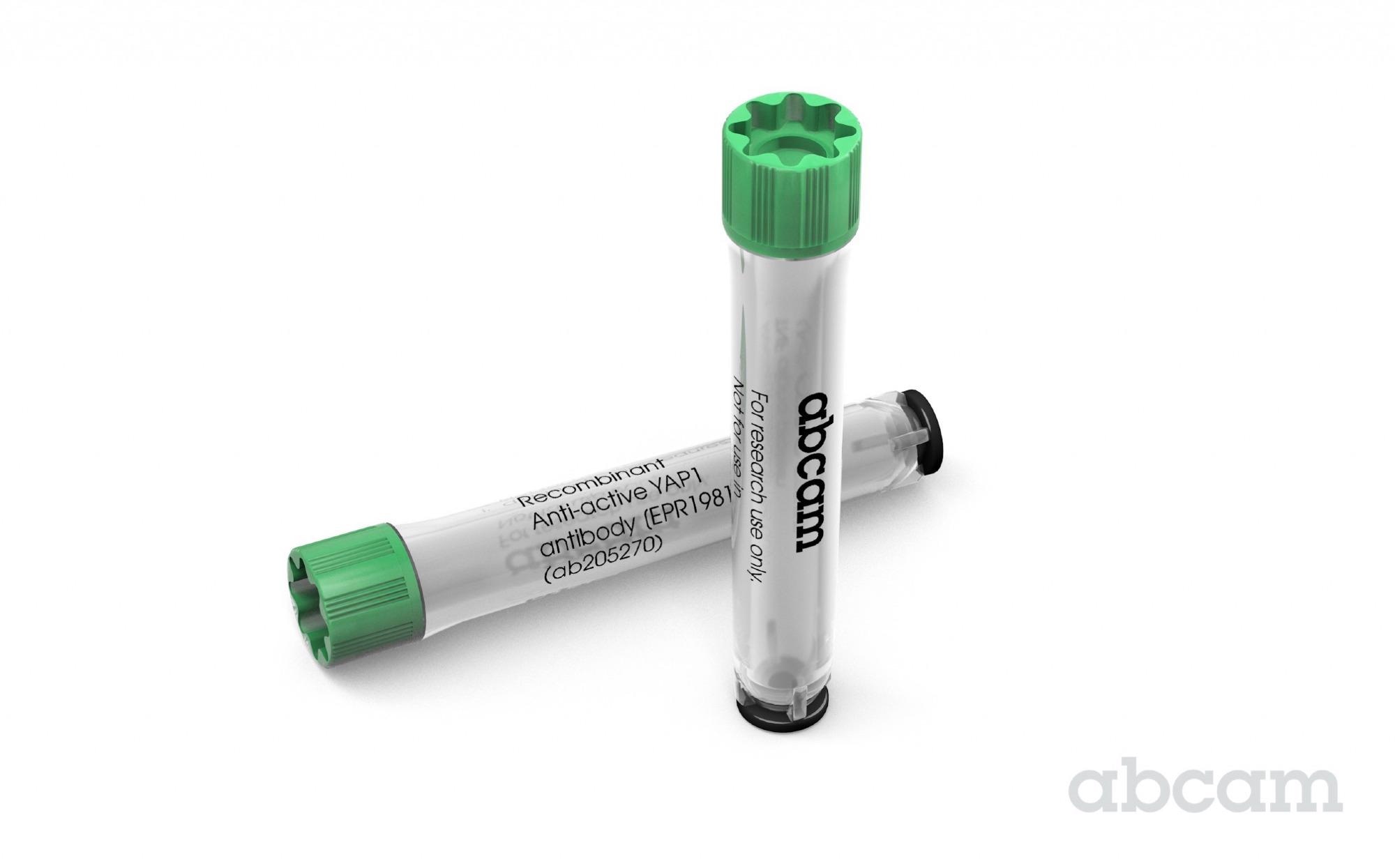Produced in Partnership with AbcamDec 13 2021
In partnership with the Genesis 2021 conference, we speak to Kirstie Speck from Abcam about the importance of innovation within the life sciences and how its role will change over the next 10 years.
Please can you introduce yourself and tell us about your role at Abcam?
I am Kirstie Speck, and I lead the Data & Advanced Analytics team at Abcam, which covers Data Engineering, Data Management, Data Analytics, and Data Science. Our remit is to expand the data and advanced analytics capacity and capability across the whole organization, develop the technology to deliver real-time analytics and data science, and build strong data management and analytics processes to support the business.
We are moving from using analytics to enhance existing products and services and optimize functional performance to launching new data products and services and transforming functional performance. All in the pursuit of serving life scientists to help them accelerate their scientific breakthroughs and, ultimately, have a positive impact on people’s lives.
Abcam’s mission is ‘to serve life scientists to achieve their mission, faster.’ Why have you chosen to focus on time, and how are you going about achieving this mission?
Time has always been a critical constraint for researchers across all segments of life sciences, whether it is applying for a grant, submitting a manuscript, developing innovative vaccines, or therapies. The last 18 months have significantly amplified the need to deliver scientific discoveries at a pace. However, any scientific advance is underpinned by data integrity and experimental reproducibility, which reinforces that speed shouldn’t be at the expense of scientific robustness.
For the past few years, Abcam has focused on numerous internal and external projects aimed at improving experimental productivity and data reproducibility across the sector. Our ‘quality’ initiatives are enabling us to deliver high-performance and consistent reagents at pace and scale, and more importantly, they are giving our customers and partners the confidence to accelerate progress and reduce wasted resources.
Learn more about how we are supporting scientific reproducibility here: https://corporate.abcam.com/innovation/reproducible-science/
We are Abcam
You focus specifically on antibodies, reagents, and kits. How important are antibodies to the life sciences, and can you give an overview of some of your products and their applications?
Antibodies are broadly recognized as accurate and versatile biological tools for many applications. As a research reagent, they support the understanding of the role of proteins in biological pathways. Ultimately, findings from this work translates into tools to diagnose disease states, development of potential therapeutic treatments, advances in agriculture, and environmental development, that all enhance health and wellbeing and positively impact society.
Our products are used every year by around 750 000 researchers globally, in all scientific areas from cancer to neuroscience, immunology, epigenetics, metabolism, stem cell applications, etc. Our goal is to enable widespread access to high-performance, reproducible, off-the-shelf reagents and kits to advance research, resulting in faster breakthroughs in scientific understanding, and an accelerated transition of those breakthroughs into societal benefits.
You also offer customized products that tailor to your client's needs. Why is it important to not only offer standard products but offer tailored ones also? What advantages does this have for research?
As a fundamental tool for life sciences researchers, biological reagents need to be precisely engineered and perform at their best, every time. However, to push the boundaries of science, we sometimes need to push the boundaries of the available technologies and tools. That’s why ‘customized solutions’ are equally important as off-the-shelf reagents.
To date, Abcam has successfully delivered over 2000 successful custom programs which include adapting proteomic reagents from our portfolio, meeting large volume requirements, creating a bespoke formulation of a reagent or kit, developing a unique de novo product, etc.
By designing reagents and kits that exactly meet the needs of life sciences researchers, our goal is to help mitigate risk. Whether our collaborators are developing new drugs, diagnostic tools or exploring new biologies that have the potential to underpin the next game-changing breakthrough, the right reagent at the right time is vital.

Image Credit: abcam
You are speaking on a panel at the Genesis conference taking place on the 9th of December in London. What should people expect from this talk?
I’m excited to join Genesis’ panel on ‘Innovation Drivers’. In the life sciences industry, we often talk about innovation as a synonym for a new molecule, new target, new platform, etc. It is a great opportunity to discuss what ‘innovation’ means beyond this, and how innovation serves unmet and often unformulated needs and brings substantial value to the end-user.
We will also discuss how we can identify solutions from outside the life sciences sector and apply them to key areas such as manufacturing, data analysis, distribution, deal-making, customer relationships, etc.
How do you think innovation has changed in the life sciences over the last 10 years? How do you see this changing over the next 10?
I think the advent of artificial intelligence and the improvement of computational science have profoundly helped us to understand interactions between complex pathways. For applications like next-generation sequencing, proteomics analysis, spatial biology imaging, multiplexing solutions, etc. the amount of data that we collect, analyze, share, and store is multiple orders of magnitude larger than it was 10 years ago.
A recent example is the public release of AlphaFold, DeepMind’s AI that can accurately predict 3D models of protein structures from their sequence – addressing a challenge that scientists have been struggling with for decades.
Predicting what the future will unlock is always difficult, but I guess this trend is going to progress and benefits for society are going to crystalize. For example, we can imagine a shift from treating diseases to preventing diseases. A wellness agenda, that puts health in a more central place, relying for example on the routine use of smart applications, large-scale screening, rapid and user-friendly diagnostic kits, all seamlessly aligned with personalized medicine-making capabilities. Taking us one step further, we can imagine people producing their own rapid test, via a 3D printer at home, getting the result almost instantly, and accessing the relevant medication they may require from the same device.
Although it sounds too futuristic to be achieved in the next 10 years, it is reasonable to state that future breakthroughs will result from the synergistic cooperation between several disciplines, which is, fortunately, something already in motion across the life science industry and front of mind with regards accelerating success.

Image Credit: Sergey Nivens/Shutterstock.com
What has the ongoing COVID-19 pandemic taught us about the importance of collaboration? Do you see more researchers and organizations starting to collaborate as a result of the pandemic?
Collaboration is intrinsic to life sciences and this has been clearly and openly demonstrated during the COVID era. As an example, the necessity to increase our digital presence (and subsequent decrease/ removal of geographic separation) has turned local reunions into digital events with a global reach. Consequently, this has enabled new groups of people to come together, multiplied engagement, catalyzed connections, and enabled better access to skills and knowledge.
During the pandemic, we have also seen examples of organizations working together, putting aside commercial, IP or ownership matters to ‘fight a common enemy’ and develop innovative solutions for society. As a result, such achievements have potentially raised expectations from the public to gain access to innovative therapies faster, putting additional pressure on all stakeholders to think about how they can deliver innovative solutions faster while meeting the highest levels of compliance and quality.
“Repurposing” can help address this, whether applied to facilities, scientific platforms, molecules or drugs, algorithms, skills, etc. It can help create connections between emergent needs and potential solutions from unexpected sources. This is exemplified by how quickly Abcam identified new tools to help scientists research SARS-CoV-2.
Our scientific experts manually developed a list of protein targets relevant to understanding the coronavirus, but then our data science team took this list and repurposed algorithms to go through vast amounts of data sources to identify further protein targets. The output of these algorithms identified 7 times more complementary targets than the original list, leading to the addition of 320 new products available to the scientists working to understand the disease and find potential ways to fight the pandemic.
To date, these products have been supporting scientists in 44 countries, representing 550 organizations, in their work to develop urgently needed solutions for COVID-19.
Have you got any exciting projects upcoming at Abcam? If so, what are they?
There are numerous projects in motion at Abcam. In the Data & Advanced Analytics department, we continue to leverage data and algorithms to unlock insights that bring value for end-users, enable our business to grow at scale, and, ultimately, better serve our customers and partners.
Where can readers find more information?
For more information, visit Abcam’s corporate site: https://corporate.abcam.com/